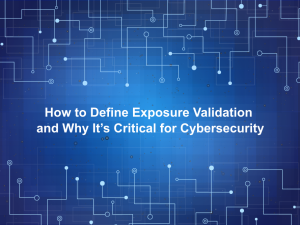Protecting sensitive data has never been more critical. Data breaches expose confidential information, leading to financial losses, reputational damage, and compliance violations. Data masking emerges as a powerful solution, allowing organizations to secure data while maintaining usability for operations, such as testing, analytics, and cloud storage. Unlike encryption, which requires decryption to access data, data masking transforms real data into a protected format, ensuring that even if compromised, the information remains unusable to attackers.
How Does Data Masking Work?
Data masking replaces sensitive data with fictitious but realistic values while maintaining the original structure and format. This ensures that data remains functional for business processes without exposing confidential information. The process typically follows these methods:
- Static Data Masking (SDM) – Data is permanently masked at rest, ensuring no real information is stored in non-secure environments.
- Dynamic Data Masking (DDM) – Data is masked in real-time as it is accessed, allowing authorized users to view only the necessary details.
- On-the-Fly Masking – Used for transferring data between environments, such as moving data from production to development without exposing the values.
Why Is Data Masking Essential for Cybersecurity?
Data masking is a crucial cybersecurity measure that helps organizations prevent data leaks while ensuring compliance with security regulations. Its key benefits include:
- Protection Against Data Breaches
By masking sensitive information, even if attackers gain access to a database, they cannot retrieve real data. This reduces the risk of financial and personal data exposure.
- Regulatory Compliance
Organizations handling personal and financial data must comply with regulations like GDPR, HIPAA, and PCI-DSS. Data masking helps achieve compliance by ensuring sensitive data is not exposed in non-secure environments.
- Secure Data Sharing and Testing
Development teams, analysts, and third-party vendors often require access to data for testing and analytics. Data masking allows them to work with realistic data while ensuring that sensitive information remains protected.
- Reduced Insider Threats
Insider threats pose a significant cybersecurity risk. By masking data, employees and contractors only access the necessary level of information, minimizing the risk of unauthorized misuse.
Implementing Data Masking in Your Security Strategy
Integrating data masking into an organization’s cybersecurity framework requires careful planning and execution. Simply applying masking techniques without a strategic approach may leave gaps that attackers can exploit. A well-structured implementation enhances data protection without compromising efficiency, making it a crucial step in strengthening overall cybersecurity.
- Identify Sensitive Data – Classify and locate sensitive information, such as personally identifiable information (PII), financial records, and intellectual property.
- Choose the Right Masking Technique – Select an approach that aligns with your security needs, such as dynamic masking for real-time access control or static masking for long-term data protection.
- Integrate with Existing Security Measures – Data masking should complement encryption, access controls, and monitoring solutions for a comprehensive security framework.
- Regularly Audit and Update Masking Policies – Cyber threats and compliance requirements evolve, making it essential to continuously review and update data masking policies.
Data masking is an essential cybersecurity tool that ensures sensitive information remains secure while being usable for business operations. Businesses must first understand their data landscape, identify vulnerabilities, and ensure that masking solutions align with security objectives and operational needs.
For expert guidance on implementing data masking and other cybersecurity solutions, contact Terrabyte today!



